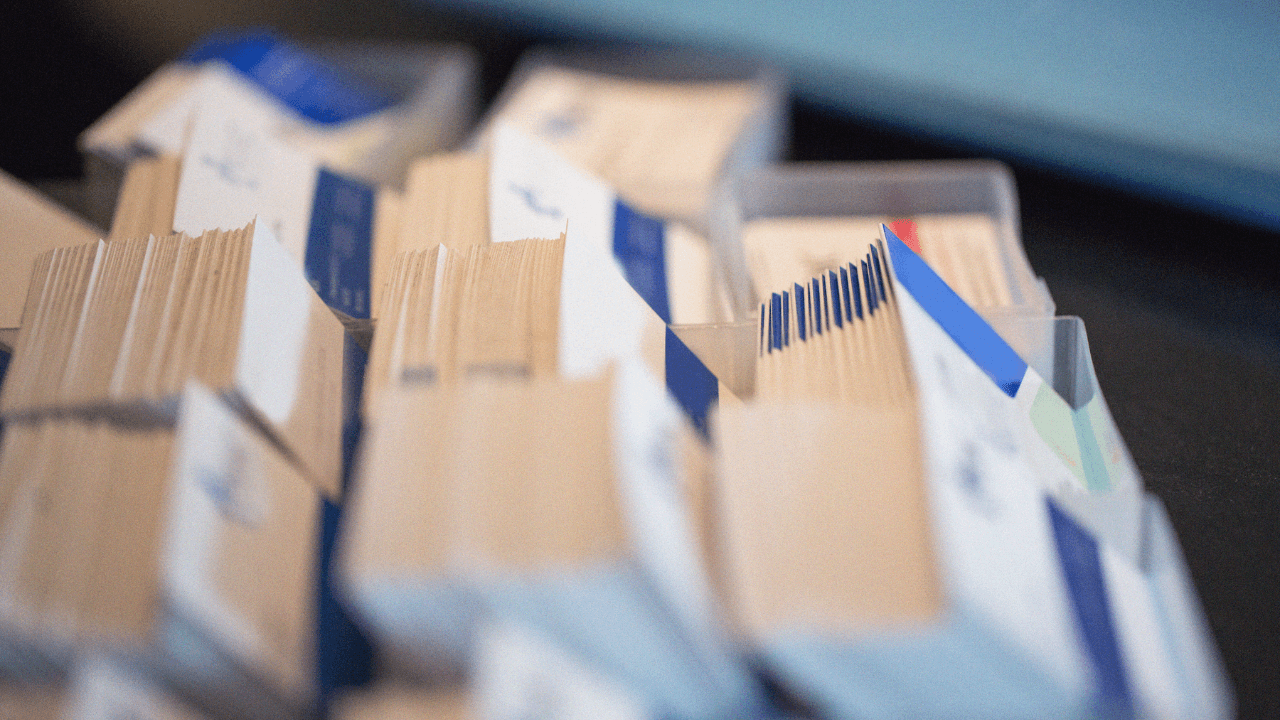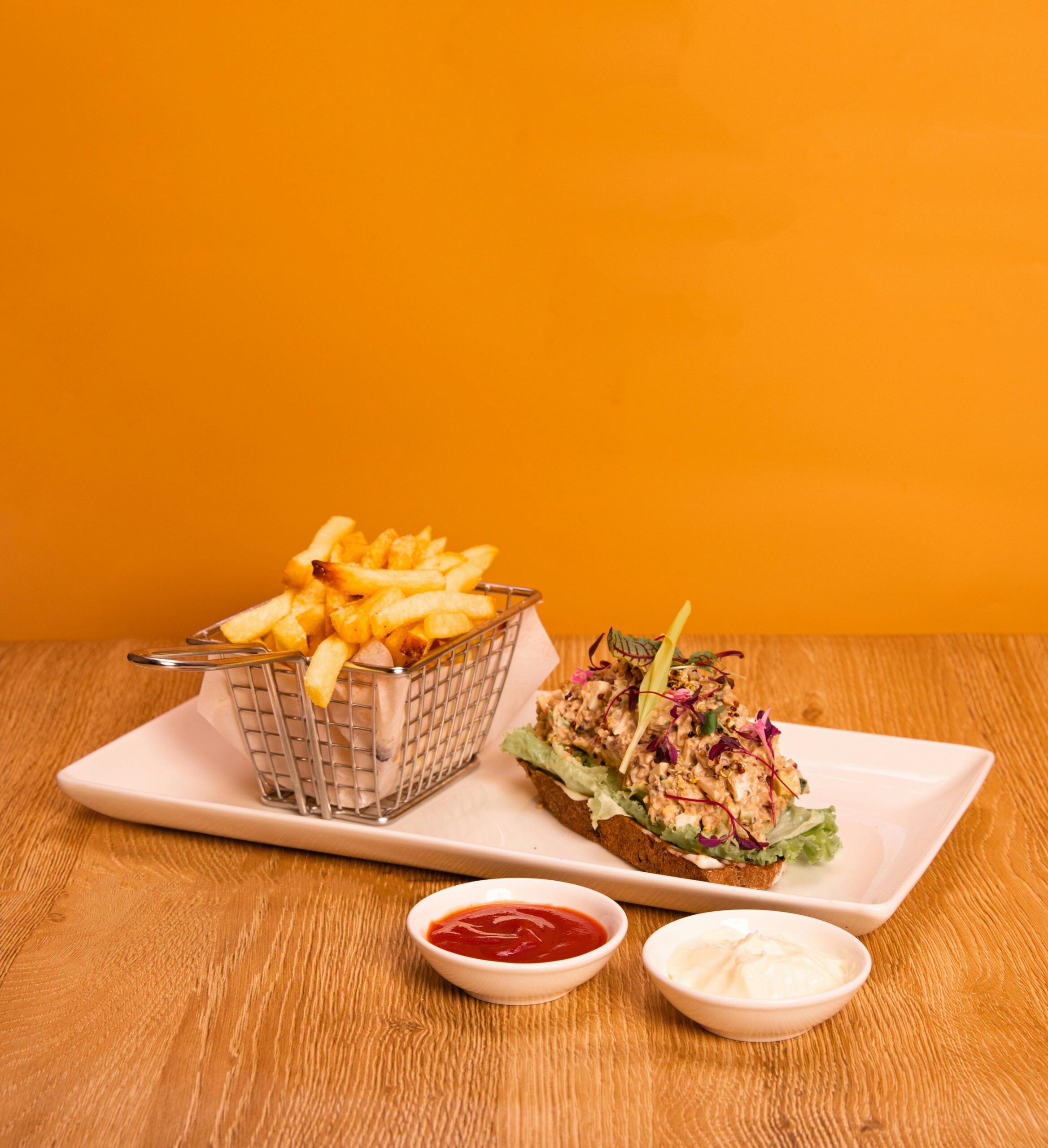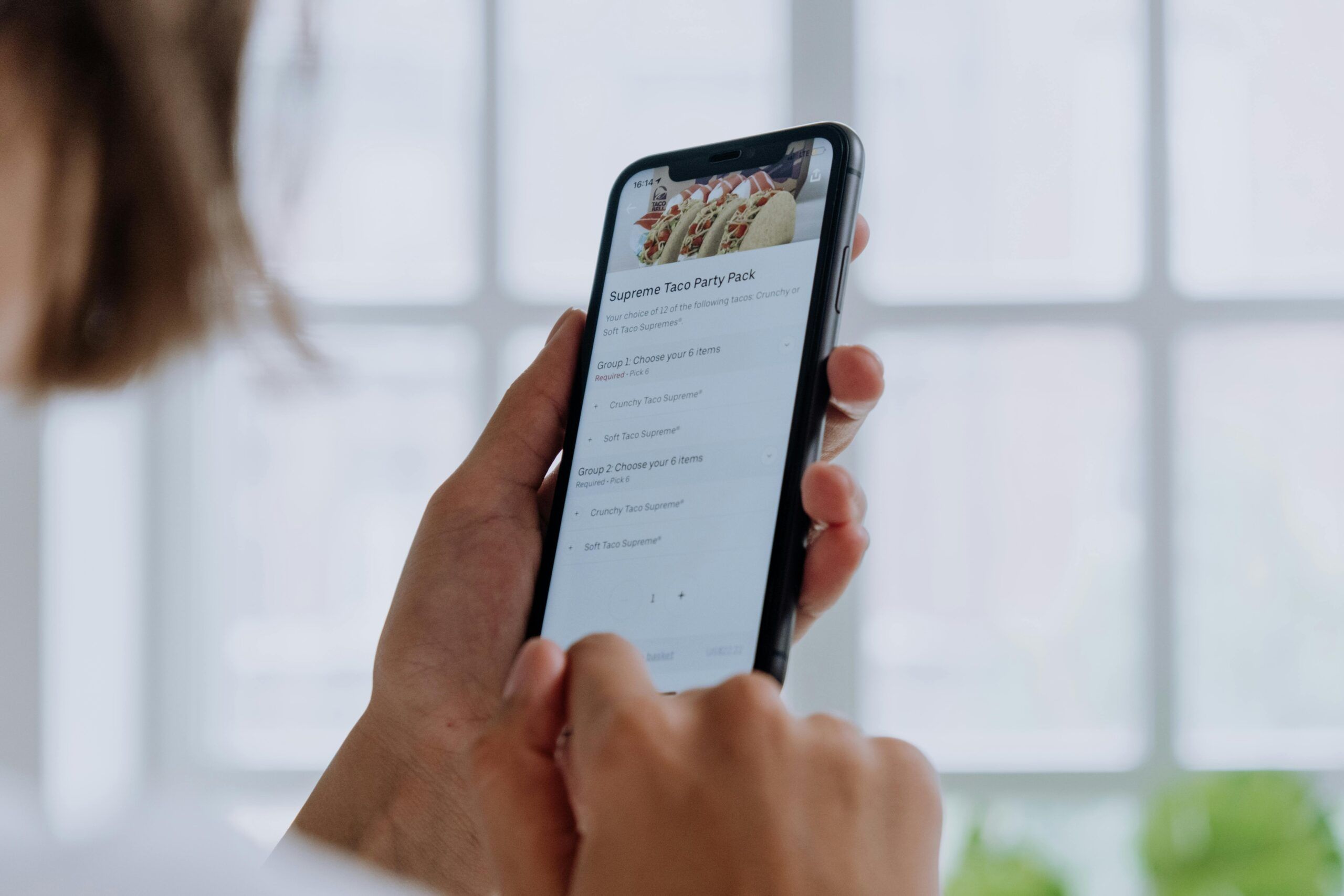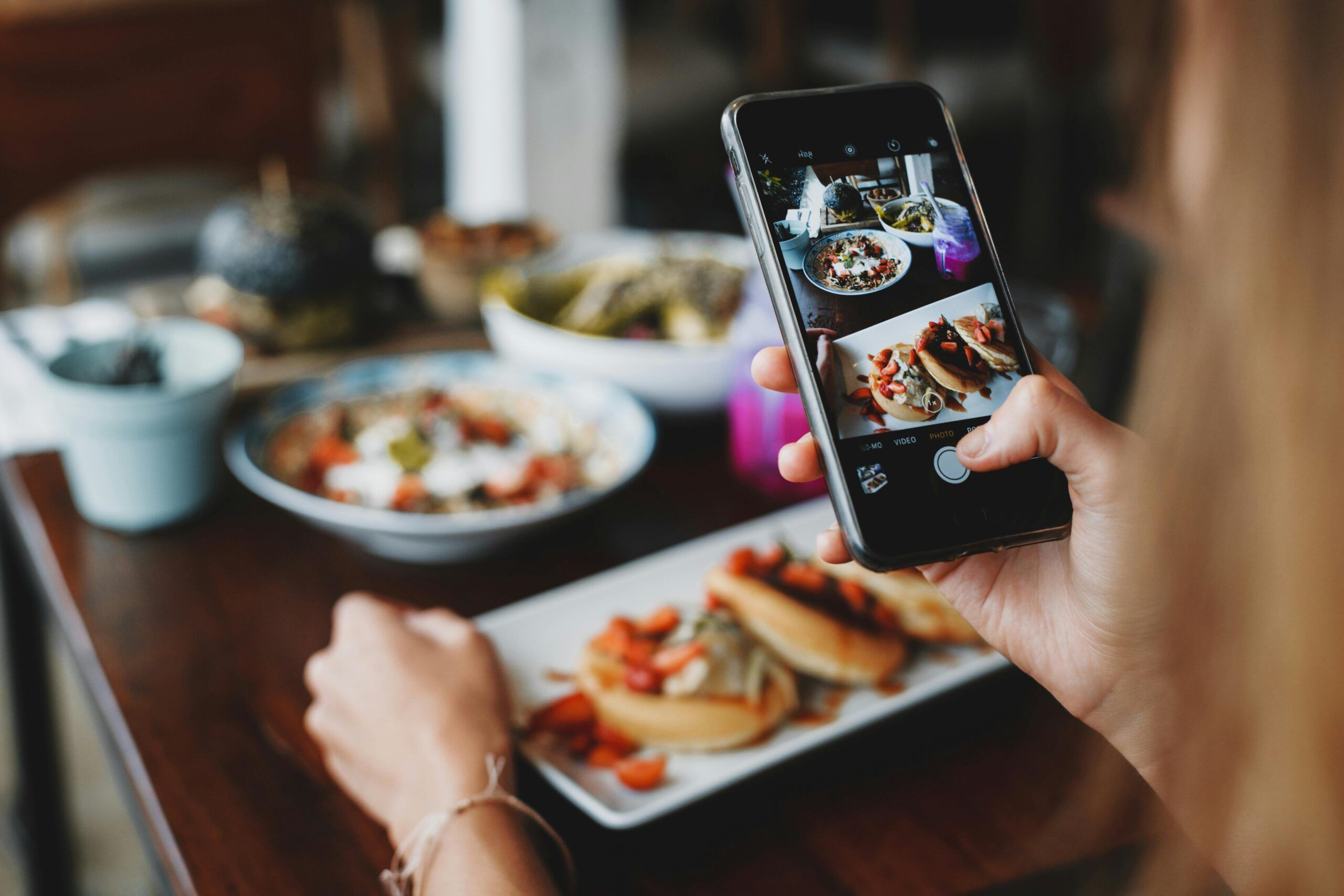- Why Are Restaurant Brochures Beneficial for Your Business
- What to Include on a Restaurant Brochure ( Do’s and Don’ts)
- How to Ensure Your Restaurant Brochure is Successful
What happens when you meet someone new, and they appear apathetic, dull, and uninteresting?
You probably decide to never cross paths with them again. Or maybe give them a shot next time. But rarely would you think to get to know them better.
Whether we like it or not, first impressions matter. As a restaurant, you’d want to make sure your customers are impressed by your food business in the first round.
It’s true that customer preferences can be challenging to fulfill sometimes, but focusing on a few essential features, like restaurant brochures, can make a huge impact.
In this article, we’ll cover how restaurant brochures impact customer decisions and how you can craft a well-designed brochure to ensure customer satisfaction.
Why Are Restaurant Brochures Beneficial for Your Business
Restaurant brochures can be beneficial for your business in several ways. Here are some reasons why:
Marketing Tools
- Attracting Customers: Brochures serve as a tangible marketing tool that can be distributed in the local community, hotels, or other businesses to attract potential customers. They can showcase your restaurant’s ambiance, cuisine, and special offerings.
- Brand Promotion: Brochures help in promoting your restaurant’s brand. A well-designed brochure with your logo, color scheme, and unique selling points can leave a lasting impression on customers.
Information Dissemination
- Menu Presentation: Brochures are an effective way to present your menu. You can include high-quality images of your dishes, descriptions, pricing, and special offers.
- Contact Information: Brochures provide a platform to share essential contact details, such as your restaurant’s address, phone number, website, and social media handles.
Special Offers and Promotions
- Highlighting Specials: If your restaurant has special promotions, discounts, or events, a brochure can be used to highlight these offerings. This can encourage repeat business and attract new customers.
Increased Visibility
- Strategic Placement: Distributing brochures in strategic locations, such as local businesses, hotels, or tourist information centers, can increase your restaurant’s visibility and reach a broader audience.
Professional Image
- Credibility: The right brochure reflects a commitment to quality and attention to detail. It can enhance your restaurant’s credibility and make a positive impression on potential customers.
Targeted Marketing
- Demographic Targeting: Brochures allow you to tailor your marketing message to specific demographics. For example, if your restaurant caters to families, you can include family-friendly content and images in your brochure.
Cost-Effective
- Printing Economies: Once designed, printing brochures in bulk can be cost-effective. This allows you to reach a large number of potential customers without a significant ongoing expense.
Tangible Souvenir
- Memorability: A well-crafted brochure can serve as a tangible souvenir for customers. If it’s visually appealing and informative, customers may keep it for future reference or share it with others.
Competition Differentiation
- Showcasing Uniqueness: Your brochure is an opportunity to showcase what makes your restaurant unique. Whether it’s your chef’s specialties, a unique theme, or a commitment to local and sustainable ingredients, the brochure allows you to communicate these aspects.
What to Include on a Restaurant Brochure ( Do’s and Don’ts)
Creating an effective restaurant brochure involves a careful balance of information and design elements. Here are some do’s and don’ts to consider when putting together a restaurant brochure:
Do’s:
- Eye-Catching Design:
- Do: Invest in professional design to create an eye-catching and visually appealing brochure. Use high-quality images of your restaurant, dishes, and ambiance.
- Clear and Concise Information:
- Do: Keep the content clear and concise. Highlight key information such as your restaurant’s name, address, contact details, and opening hours.
- Menu Showcase:
- Do: Showcase your menu with attractive images, dish names, and brief descriptions. Highlight any signature dishes or chef’s specials.
- Branding Elements:
- Do: Include branding elements such as your restaurant’s logo, color scheme, and any taglines that represent your brand identity.
- Contact Information:
- Do: Clearly display your restaurant’s contact information, including phone number, website, and social media handles.
- Special Offers and Promotions:
- Do: Feature any special offers, promotions, or events. Use enticing language to encourage customers to take advantage of these offerings.
- Testimonials or Reviews:
- Do: If applicable, include positive testimonials or reviews from satisfied customers. This can add credibility to your restaurant.
- Map or Location Details:
- Do: Include a map or clear directions to help customers locate your restaurant easily.
- Quality Printing:
- Do: Invest in high-quality printing to ensure that your brochures look professional and are durable.
- Targeted Messaging:
- Do: Tailor your messaging to your audience. For example, if your restaurant caters to families, emphasize family-friendly features.
Don’ts:
- Overwhelming Design:
- Don’t: Overcrowd the brochure with too many design elements or information. Keep it clean and easy to read.
- Excessive Text:
- Don’t: Include excessive text. Use concise language to convey your message and avoid overwhelming the reader.
- Outdated Information:
- Don’t: Forget to update the brochure regularly. Ensure that all information, including menu items and prices, is current.
- Low-Quality Images:
- Don’t: Use low-quality images. High-resolution, appealing visuals are essential to make a positive impression.
- Unclear Call-to-Action:
- Don’t: Forget to include a clear call-to-action. Whether it’s making a reservation, visiting your website, or ordering online, guide the reader on what to do next.
- Inconsistent Branding:
- Don’t: Use inconsistent branding. Maintain a cohesive look and feel throughout the brochure to reinforce your brand identity.
- Generic Language:
- Don’t: Use generic or uninspiring language. Use words that evoke emotions and create a connection with the reader.
- Neglecting Mobile Users:
- Don’t: Neglect the mobile audience. Ensure that your brochure design is mobile-friendly and easy to view on various devices.
- Ignoring Printing Guidelines:
- Don’t: Ignore printing guidelines. Make sure your design meets the printing specifications to avoid any issues during the printing process.
- Lack of Differentiation:
- Don’t: Blend in with the competition. Highlight what makes your restaurant unique and sets it apart from others.
Learn How Restaurant Trends in 2024 Will Impact Your Marketing Strategies.
How to Ensure Your Restaurant Brochure is Successful
Ensuring your restaurant brochure’s success involves thoughtful planning, strategic execution, and ongoing evaluation.
Here are some key steps to ensure that your restaurant brochure is successful:
Understand Your Audience
- Research your Target Audience: Understand the demographics, preferences, and behaviors of your target audience. Tailor your brochure content and design to appeal to their interests.
Your Inbox, Your Rules!
Tailor your newsletter with the topics you're most interested in.
Define Clear Objectives
- Set Goals: Clearly define the objectives of your brochure. Whether it’s to increase foot traffic, promote special offers, or build brand awareness, having specific goals will guide your design and content choices.
Professional Design
- Hire a Professional Designer: Invest in a professional graphic designer to create a visually appealing and cohesive design that aligns with your restaurant’s brand. It can also be helpful to search for restaurant brochure templates online to narrow your options and provide them to your designer.
Quality Content
- Craft Compelling Copy: Use engaging and persuasive language to describe your restaurant, menu, and special offerings. Ensure that the content is error-free and easy to understand.
Highlight Unique Selling Points
- Showcase What Sets You Apart: Clearly communicate the unique selling points of your restaurant. Whether it’s a special chef’s recipe, a unique ambiance, or sustainable practices, highlight what makes your restaurant special.
Incorporate High-Quality Images
- Use Professional Photography: Include high-quality images of your dishes and restaurant. Professional photography enhances the visual appeal of your brochure and gives customers a glimpse of what to expect.
Emphasize Branding
- Maintain Consistent Branding: Ensure that your branding elements, such as logo, color scheme, and fonts, are consistent throughout the brochure. This reinforces your restaurant’s identity.
Provide Clear Contact Information
- Make Contact Details Prominent: Display your restaurant’s contact information prominently. Include phone numbers, the website, social media handles, and the physical address.
Include a Call-to-Action
- Guide the Reader: Incorporate a clear call-to-action, guiding the reader on the next steps. This could include making a reservation, visiting the website, or taking advantage of a special promotion.
Print and Distribute Strategically
- Choose Strategic Locations: Distribute your brochures in strategic locations, considering your target audience. Places like hotels, tourist information centers, and local businesses can be effective distribution points.
Measure and Evaluate
- Track Effectiveness: Implement tracking mechanisms to evaluate the success of your brochure. This could include asking customers how they discovered your restaurant or tracking online reservations or orders that resulted from the brochure.
Regularly Update Content
- Keep Information Current: Regularly update your brochure to reflect any changes in menu items, prices, or promotions. An outdated brochure can be misleading and may result in customer dissatisfaction.
Seek Feedback
- Gather Customer Feedback: Encourage customers to provide feedback on your brochure. This can offer insights into what works well and what could be improved.
Adapt to Feedback
- Iterate and Improve: Based on customer feedback and the effectiveness of your brochure, be willing to make improvements. Continuously iterate on your design and content strategies to enhance success.
Utilize Your Brochures to Gain More Customer Loyalty
A well-crafted restaurant brochure can serve as a powerful restaurant tool to captivate your audience, showcase your culinary delights, and drive customer engagement.
By adhering to the do’s and don’ts and following the outlined steps, you set the stage for a successful marketing campaign that highlights your restaurant’s unique offerings and establishes a lasting connection with your patrons.
For an added boost to your restaurant marketing strategy, consider leveraging platforms like Orders.co.
With Orders.co, you can seamlessly integrate online ordering into your business, providing convenience to your customers and expanding your reach beyond the walls of your restaurant.
This innovative solution streamlines the ordering process and offers valuable insights into customer behavior, allowing you to tailor your marketing efforts for maximum impact.



